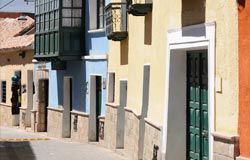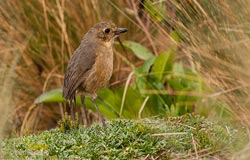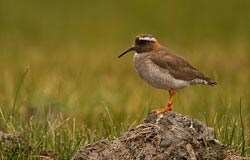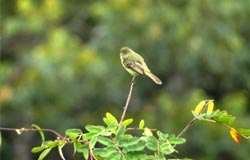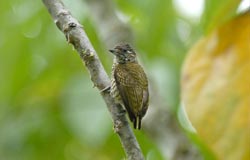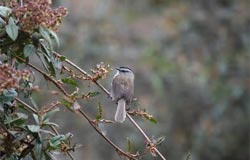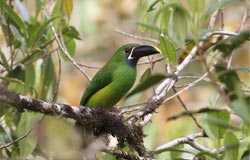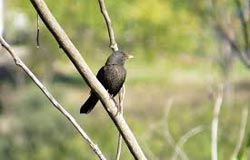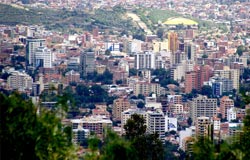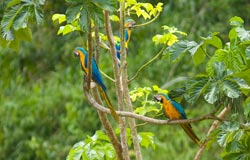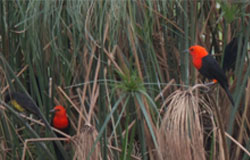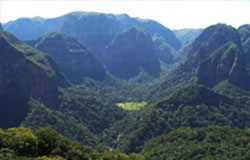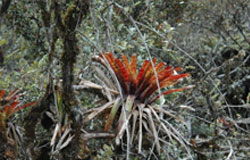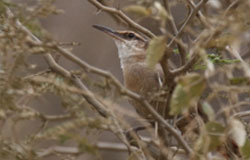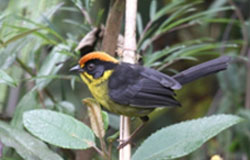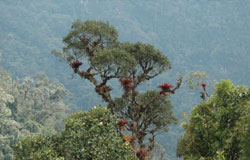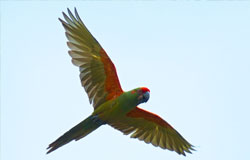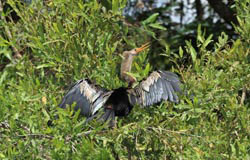Day 1:
Most International flights arrive at Viru-Viru airport in Santa Cruz early in the morning. Visit to the very birdy Botanical gardens. We'll pay particular attention to any Santa Cruz specialties we may have missed. First, we’ll visit a small lake, which is home to Least Grebe, Rufescent Tiger-Heron, Wattled Jacana, Rufous-sided Crake, Rufous-tailed Jacamar, Yellow-chinned Spinetail and Red-capped Cardinal. The light forest around the lake is often noisy with Yellow-chevroned Parakeets, Blue-winged Parrotlets, Thrush-like Wrens and Rufous Horneros. Once in the tall Chiquitano dry forest we may see many birds including Green-cheeked Parakeet, Buff-bellied Hermit, White-wedged Piculet, Bolivian Slaty Antshrike and Fawn-breasted Wren, Pale-crested Woodpecker and White-backed Fire-eye.
With luck, we may hear or see Hooded Capuchin and Pale Titi Monkey or see a family of Black-tailed Marmosets. To the east of the botanic garden lies a patch of Chacoan thorn scrub where we’ll look for Rufous-throated Sapphire, Red-billed Scythebill, White-bellied and White-crested Tyrannulets, Mato Grosso Antbird and the delightful Stripe-backed Antbird. After lunch at a typical restaurant we spend the afternoon at Lomas de Arena. Lomas de Arena was initially preserved because of a small lake between sand dunes that can give the impression of having a beach. Several types of habitats are preserved in the area: savannahs, dry forest, marshes and large water bodies. The area is also a stop over and wintering ground for many Austral and Boreal migrants.
Over 240 birds have been recorded in the park but it is believed only 70 are actual residents. The usual daily list stands at 60-80 species. The bird community is in constant flux, with many crazy single day records of hundreds of Austral migrant birds just passing through on their way to or from Argentina. Moreover, in Bolivia 's summer, Eastern Kingbirds and Barn Swallows can be the most abundant birds.
The area has many easily seen desired birds such as Comb Duck, Brazilian Duck, Burrowing Owl, White-eared Puffbird, White Woodpecker, Chalk-browed Mockingbird, and Chotoy Spinetail. The area also harbors some rarities like Toco Toucan, and Red-legged Seriema. Birds seen in this area are Red-winged Tinamou, White-bellied Nothura, Buff-necked Ibis, White-tailed Hawk, Southern Caracara, Burrowing Owl, White-eared Puffbird, White-woodpecker (Austral Migrant), Campo Flicker, Pale-breasted Spinetail, Hudson's Black-Tyrant (Austral Migrant), Spectacled Tyrant, Black-backed Water-Tyrant, Yellowish Pipit, Wedge-tailed Grass-Finch, and the rare Black-throated Saltator.
Further on the road is the Hotal Sol & Arena. Over the vegetated small sand dunes east of the hotel (just behind the dining area) is a large area of closed dry and mixed forest that is well worth a visit. The land is private and used for cattle pasture. There is no official trail system, but there is well used cattle trail that travels over the vegetated sand dunes and into the forest, from there travelling north and south. In the closed forest area, there is Ferruginous Pygmy-Owl, Blue-crowned Trogon, Blue-crowned Motmot, Chestnut-eared Aracari, Toco Toucan, Narrow-billed Woodcreeper, Buff-breasted Woodcreeper, Great Antshrike, Steaked Flycatcher, Crowned Slaty-Flycatcher, Moustached Wren, Plush-crested Jay, Grayish Saltator, and Orange-backed Troupial. Night in Santa Cruz B: L: D
